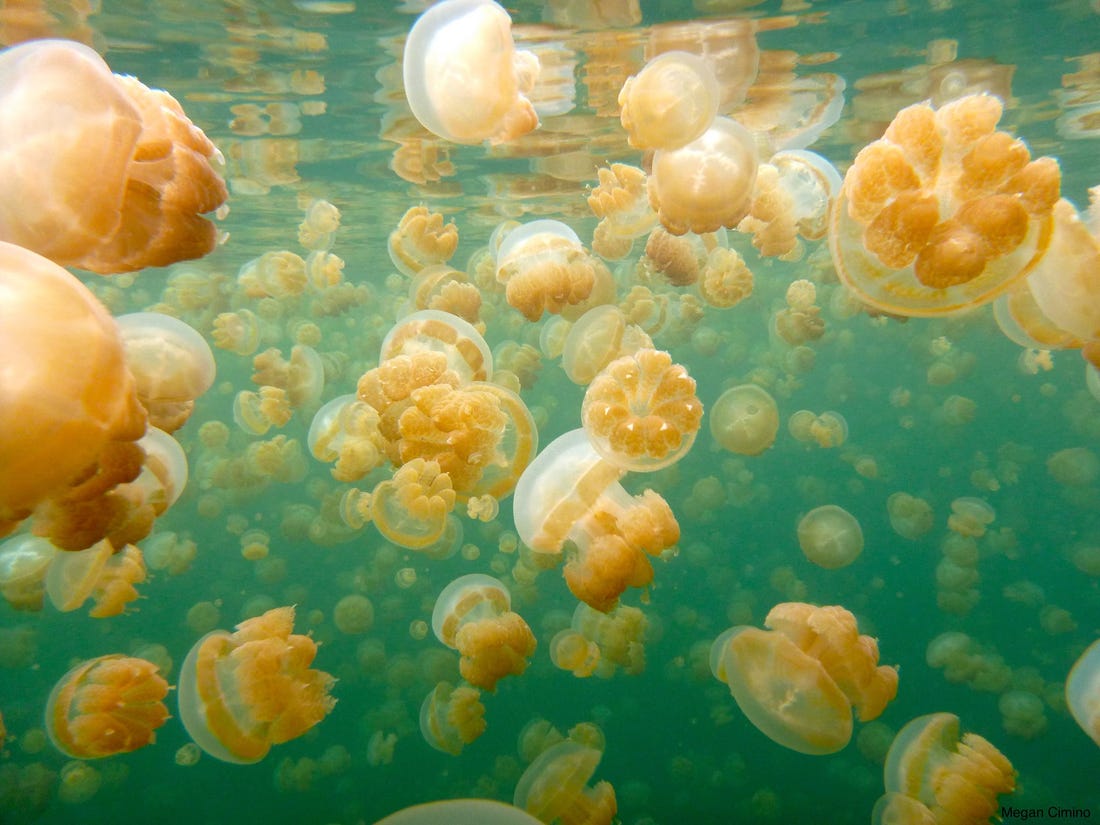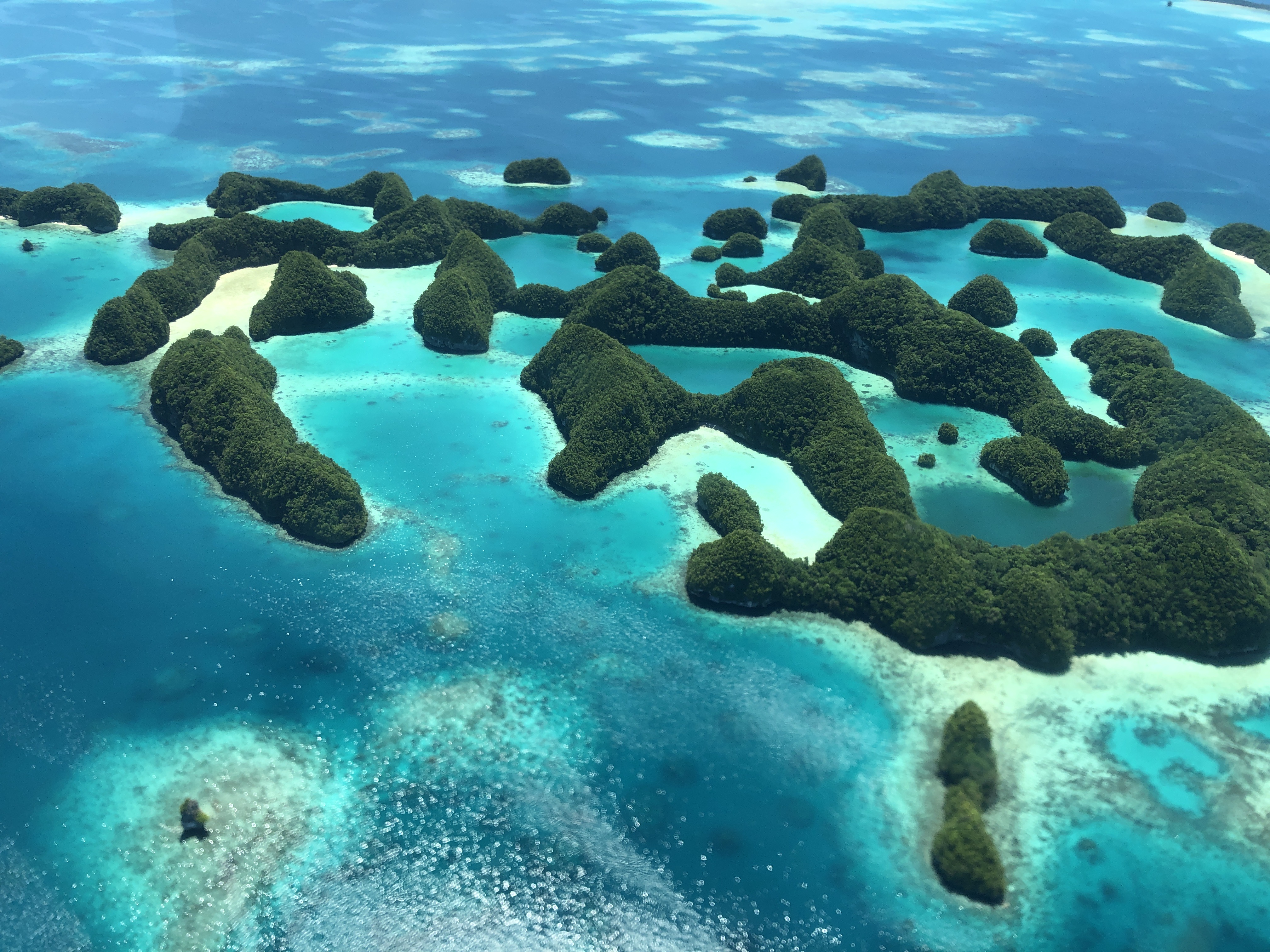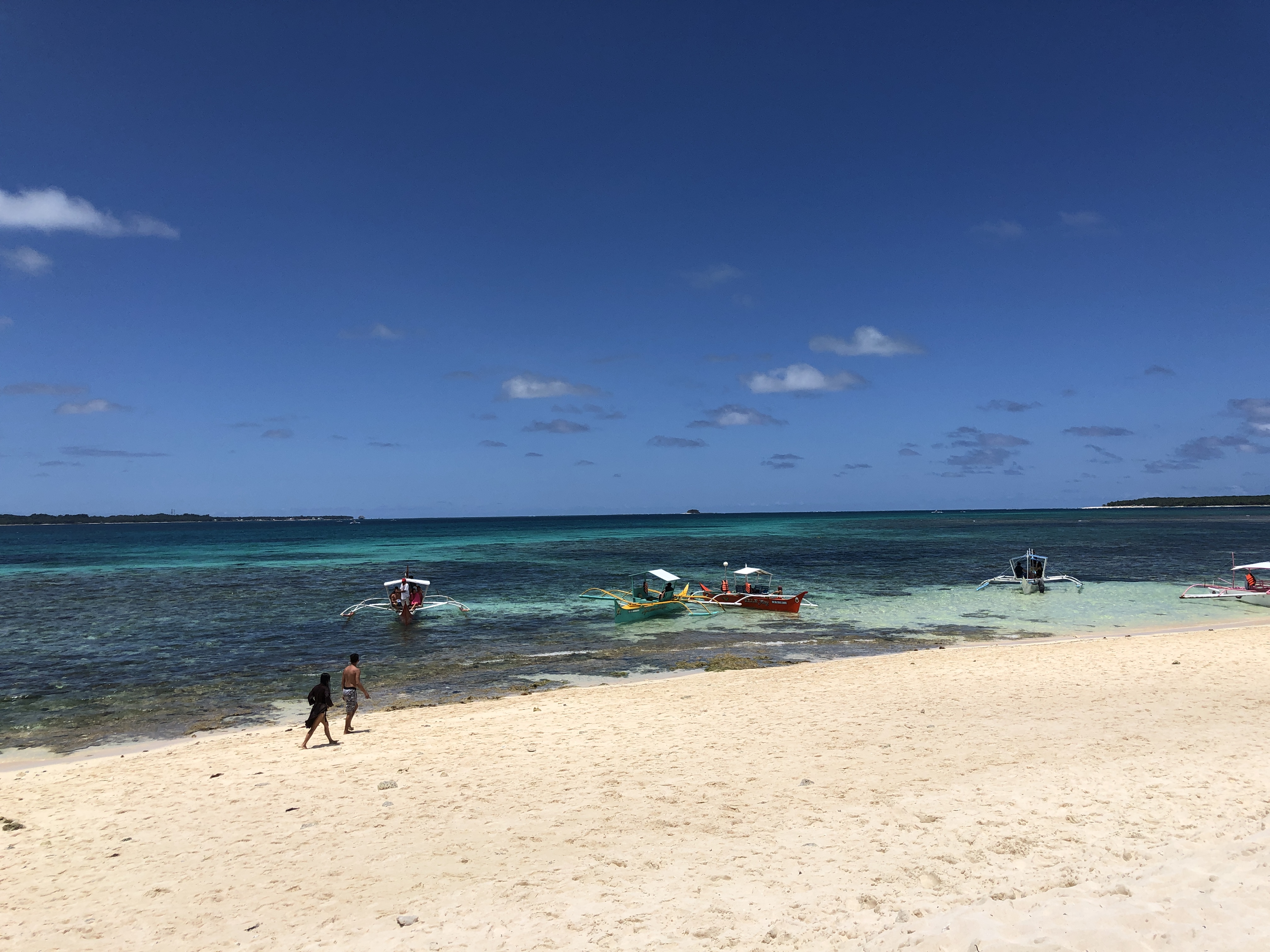
If you are not a diver, fret not, as there are many other interesting activities to check out during your trip to Palau.

Just outside the main city area of Koror lies Long Island Park, accessible by taxi, a bicycle ride or a short walk from the hotel stretch. Turning left after crossing the Malakal Bridge you will find Long Island Park. It is a public place where people can swim, snorkel or just hang around relax and have with some fun friends for free.

Tourists in tour buses flock to this place for a short swim. You will find a variety of small fishes, but if you get lucky and the tide is high you will find big ones too. When I visited during the weekend, this park was filled with locals having barbecue and taking a dip in the clear waters. The water conditions look clean so it is safe to swim here as the tide is not strong either.

If you are hungry, do check out Bem Ermii’s food truck, parked at a nondescript area just before the Palau-Japan friendship bridge. This place is off the beaten path and unless someone tells you or takes you there you probably wouldn’t know it is there. I found out on my own through the Google maps while driving around Babeldaob looking for some food.


Babeldaob feels a world away from Koror, which is part of its charm and appeal. This large yet secretive island retains a pleasant rural character, and you’ll find it refreshingly quiet and free of crowds. Continuing our journey north on Babeldaob island, I drove for one hour before reaching Ngardmau waterfalls.

Ngardmau Waterfall flows from Palau’s tallest peak, 217m-high Mt Ngerchelchuus. It’s the tallest waterfall in Micronesia. It can be accessed on foot – a tough but rewarding 20- to 30-minute hike along a jungle path – or, for the less energetic, by a clunky monorail. A dip in the cool pools at the base of the falls is not to be missed. The monorail was not working during my visit and anyway I was prepared to hike to the waterfalls.

Apparently, Ngardmau railroad was built by the Japanese during the WWII period, to transport mined bauxite to the washing area to be cleaned and processed before it was sent to Japan. When the Japanese occupied Palau, they put forth a lot of energy in developing a variety of resources to sustain the Japanese who moved to the area and set up their local businesses. I was surprised to see how Japan reached the Pacific islands and fought their way down the dense jungles of Southeast Asia just to get their hands on natural resources and to boost their nationalistic pride. They were indeed a force to be reckoned with.

After climbing down a series of steps, we had to walk alongside the water. The rocks were not slippery and the power of the water at this stage was not so strong as these were more of the calm rapids. Following the trail of the water and along the boardwalk, we finally reached the main sight which is the main waterfall.

Ngardmau waterfall is around 30m in height. You can go for a dip in the refreshingly cold waters at the base of the falls. Be careful of the wooden steps leading down to the pool as they are covered with moss and can be slippery. Entrance to the waterfall is US$10 per person.

Our next stop on the island tour is Todai Lighthouse, a disused Japanese lighthouse on the northern tip of Babeldaob island. It is located in Ngarchelong state.

Todai is a Japanese word for lighthouse and it was during the Japanese administration on the islands that the Imperial Navy built the lighthouse. The lighthouse was primarily used for navigational purposes, so it was placed across the whole island in a strategic location to guide ships into the harbour. Although the availability of information was minimal, according to some eyewitness accounts from the locals, the lighthouse was completed in 1936, about 7 years before the start of WWII. It was one of the most significant structures in the northern region, because it also had the General Quarters for the small detachment to operate the lighthouse, which consisted of a lone captain and his non-commissioned officers, as well as local sentries.

The entrance fee to the old Japanese lighthouse is US$5, which I think is not worth it. Other than the view of the surrounding sea, the lighthouse was nothing to rave about because it was not restored. The buildings were all in ruins. The beautiful blue shades of the surrounding islands is indeed a sight in Palau that I will never forget.

The Stone monoliths in Babeldaob is what the Stonehenge is to the British. If you want to see the Easter Island of Micronesia, do check out the monoliths which are a part of the unique history of the country. Entrance fee is US$5 for foreigners.

Surrounded by tall coconut trees, the monoliths are scattered in an open area, with their origins unknown. The 37 ancient monoliths, contain carved faces on them, while the purpose of the monuments and when they were constructed are still unknown. However, some experts believe the monoliths were built in 100 AD.

Lastly, I drove all the way up to the small jetty. There were some private boats departing for the northernmost island, Ngerkeklau and Ngerechur. The area had many mangrove trees, which acted as natural coastal defence against high tide and tsunamis. My road trip to the north came to an end and I slowly made my way back to Koror.

If you have extra time, do check out the Capitol building, which closely resembles the one in Washington DC. Ngerulmud is the seat of government of Palau. It replaced Koror City, Palau’s largest city, as the capital in 2006.


